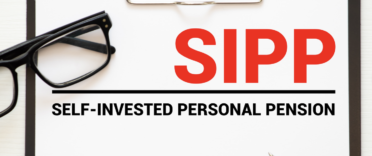
In this article we cover the basics of these two types of pension – plus the benefits of saving into each one – to help you decide if you need a personal pension and a workplace pension.
How do workplace pensions work?
Workplace pensions will be the easiest way to save for retirement for most people. Since 2012, companies must auto-enrol all eligible employees into a workplace pension scheme, a process often simply referred to as 'auto-enrolment'. This means that you don’t need to do anything in order to join. Money will automatically be deducted from your salary and paid into your pension. The minimum is usually 5%, though you can increase this amount or opt-out altogether. Your pension pot will build up each time you are paid with an added contribution from your employer, plus tax relief.
Eligible employees will be at least 22 years old, under State Pension age and earning at least £10,000 a year (for the 2024/25 tax year). If you earn less than £10,000 but more than £6,240, you can ask to join and your employer cannot say no.
Employer contributions
Your employer is legally required to contribute to your pension pot if you are auto-enrolled. The minimum contribution is usually 3% and applies to anything you earn over £6,240 up to a limit of £50,270 for the 2024/25 tax year. Some employers will base contributions on 3% of your entire salary, while others will offer higher minimum contributions, or boost the percentage if you pay more in too. For example, the company might match your contributions up to 5%. Your employer should explain the specifics of the workplace pension scheme to you when you join the company. The value of your pot will also be boosted by tax relief from the government, but the exact amount will depend on the rate of income tax that you pay.
Most workplace pensions are defined contribution pension schemes. This means that the value of your pot is determined by how much you and your employer put in and the performance of the investments. The alternative is a defined benefit pension in which your retirement income will be based on your earnings and how long you’ve been a member of the company’s scheme. There are also cash balance plans, which are a mixture of the two types of scheme.
How do personal pensions work?
A personal pension requires you to do a bit more work. While a workplace pension is organised by your employer, you will have to set up a personal pension yourself. You select a provider and arrange contributions to your pension pot. Unlike with a workplace pension, you can make lump sum contributions rather than a percentage of your salary every month, though many people will still choose to make regular monthly payments.
Personal pension schemes function like a defined contribution workplace pension, which means that the value of your pension pot will be based on how much you pay in and the performance of your investments. Pension providers usually offer a choice of different funds for you to invest in with the aim of growing your pension over your working life.
You will also benefit from tax relief. The money you pay in will likely have already been taxed, but you can balance that out by claiming tax relief on your pension contributions.
How to choose a personal pension
If you decide to choose a personal pension, there are a few important things to consider. You will want the lowest possible administration fees, dealing charges and fund manager charges, but also a scheme that works for you.
The best option available to you is likely to be a self-invested personal pension, or SIPP. SIPP pensions are a DIY option that gives you full control over where you invest your money, though there are also more managed products on the market.
You have the freedom to decide how your savings are invested and take control of where your money goes, or you can choose a plan to auto-invest for you. You can find out more about SIPPs in our article ‘The best & cheapest SIPPs’.
SIPP vs workplace pension
Here are the main differences between a self-invested personal pension and a workplace pension.
1.) Control over your money
The most significant differences between a personal pension and a workplace pension boil down to who is doing the work and making the decisions. You have little control over your workplace pension as it is set up and looked after by your employer. Your personal pension is your own – you will need to start it up and make most of the decisions yourself. The benefit of this is that you will likely be able to choose from a wider range of investment options than with a workplace pension. For example, you could choose to only invest your personal pension pot in ethical funds, but you are unlikely to have that kind of choice with your workplace pension.
On the other hand, if you don’t like making big decisions – such as where you invest the money you will need for your retirement income – a workplace pension will handle these choices for you. It will also follow some standard pension procedures, like moving money to lower-risk funds as you approach retirement. You will need to be more aware and hands-on with a personal pension.
2.) Employer contributions
Another major difference is who is making the contributions. Other than tax relief, it is down to you to grow a personal pension pot through regular payments. With your workplace pension, you can benefit from some extra money from your employer through its pension contributions. Many employers will pay in more when you pay in more, up to a capped amount. For example, your employer might match your pension contributions up to 5% of your salary. This is extra money on top of your usual wage, but also useful encouragement to invest more money in your retirement. It makes sense to only start saving into a personal pension once you have reached your employer’s contribution limit.
3.) Pension provider fees
Workplace pensions usually benefit from lower fees compared to personal pensions. The default fund in a workplace pension should not charge more than a 0.75% in fees, which is a cap set by the government. Depending on what kind of company you work for, this could be significantly lower. The cap is only for the default fund, but fees can have a huge impact on your pension pot because of the amount of time you will keep the money in there, often decades.
4.) Flexibility
A significant difference between a personal pension and a workplace pension is that a personal pension is much more flexible. You can choose to pay money regularly, or as unequal lump sums throughout the year. This might be useful if you have an unexpected expense, as you could reduce your personal pension payments to avoid going into debt, or if your income is not paid regularly in equal amounts. Making changes to your contributions with your workplace pension will usually require a longer period of notice.
Your personal pension will also follow you if you move jobs. A workplace pension is linked to your employer, so it does not move if you leave for a new job. However, you can still transfer old workplace pensions to your new workplace pension or your personal pension.
Do you need a personal pension and a workplace pension?
Most people will be part of at least one workplace pension scheme, but adding a personal pension could give you more control and flexibility. For example, if your workplace pension restricts what kind of funds you can choose from, you may be able to access a wider range through a personal pension. This will be especially relevant to savers who consider themselves to be knowledgeable about investing and want to put their money where they think it will grow the fastest. It may also be important to people looking to make sure that their pension fund is not being invested in areas they find unethical.
Non-taxpayers can also benefit from personal pensions, as they will still get tax relief through a personal pension even if they have not needed to pay tax on the money they put in. Workers earning £12,570 or less for the 2024/25 tax year do not need to pay income tax. Paying more into a workplace pension from your gross pay through salary deductions may mean you do not get any tax relief on those contributions, so a personal pension could be a more valuable alternative.
A personal pension can also complement a workplace pension if your employer is already paying its maximum contributions. If your company pays up to 5% pension contributions and you have already hit that level, increasing your own contributions will not get any more money out of your bosses. You could be putting those earnings into a personal pension instead, where you could have more control over what funds you invest in.
Can you opt out of workplace pensions?
You do not need to stay in a workplace pension scheme, even if you have been automatically enrolled. The company you work for will tell you when you have been enrolled in the workplace pension scheme. If you contact your employer to say you would like to opt out within a month, you should get any money back you have paid in. If you wait longer than a month, the money you have paid in will likely stay in the pension pot until you retire or transfer the pension.
You may be able to reduce your contributions as an alternative to opting out completely. Speak to your employer – or with the pension provider directly – to find out what your options are.
Keep in mind that your employer is required to make sure all eligible employees are enrolled in the workplace pension every three years. This means that you could be enrolled back in after you leave the pension scheme.
If you intend to opt out of your workplace pension because you want to live off State Pension payments in retirement, it may be worth thinking again. For most people, the State Pension works best as a supplement to a workplace or personal pension, but you can find out more by reading our article ‘How much is the UK State Pension’.
Should I move my old pensions?
People who have worked for a number of companies over their career might find that they accumulate workplace pensions quite quickly. When you leave a job, your pension pot stays with that company’s chosen provider until you are able to access it when you retire, unless you choose to transfer it. Having multiple workplace pensions does not break any rules, but if these pension pots come with high fees or are underperforming it could quickly erode the real value of the money you have saved. You could avoid this by transferring old workplace pensions to your current one, or starting a personal pension.
Finding the time to go through old workplace pensions and move them over can seem like a lot of unnecessary hassle, but it is worth considering. Switching pension providers could give you more control over your money and the freedom to access different investment opportunities. It makes sense to try and maximise what you have saved by making sure your pension pot is working as hard as possible through high investment yields and low fees. Leaving a pot alone and forgetting about could work out great if it is in the right place to begin with, but there is risk involved.
The important exception to note is if your pension is part of a scheme that is better than any new workplace or personal pensions. For example, if you have a final salary workplace pension the best option will almost always be to leave that pension pot where it is. The same applies to pension schemes that allow early access, significant cash lump sums or guaranteed annuity rates. It is also worth thinking about how any exit fees will affect the value of the pot you want to transfer.




